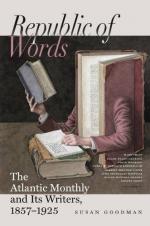But whatever its defects, the classification of Linnaeus was the first attempt at grouping animals together according to certain common structural characters. His followers and pupils engaged at once in a scrutiny of the differences and similarities among animals, which soon led to a great increase in the number of classes: instead of six, there were presently nine, twelve, and more. But till Cuvier’s time there was no great principle of classification. Facts were accumulated and more or less systematized, but they were not yet arranged according to law; the principle was still wanting by which to generalize them and give meaning and vitality to the whole. It was Cuvier who found the key. He himself tells us how he first began, in his investigations upon the internal organization of animals, to use his dissections with reference to finding the true relations between animals, and how, ever after, his knowledge of anatomy assisted him in his classifications, and his classifications threw new light again on his anatomical investigations,—each science thus helping to fertilize the other. He was not one of those superficial observers who are in haste to announce every new fact that they chance to find, and his first paper[2] specially devoted to classification gave to the world the ripe fruit of years of study. This was followed by his great work, “Le Regne Animal.” He said that animals were united in their most comprehensive groups, not on special characters, but on different plans of structure,—moulds, he called them, in which all animals had been cast. He tells us this in such admirable language that I must, to do justice to his thought, give it in his own words:—
“Si l’on considere le regne animal d’apres les principes que nous venons de poser en se debarrassant des prejuges etablis sur les divisions anciennement admises, en n’ayant egard qu’a l’organisation et a la nature des animaux, et non pas a leur grandeur, a leur utilite, au plus ou moins de connaissance que nous en avons, ni a toutes les autres circonstances accessoires, on trouvera qu’il existe quatre formes principales, quatre plans generaux, si l’on peut s’exprimer ainsi, d’apres lesquels tous les animaux semblent avoir ete modeles, et dont les divisions ulterieures, de quelque titre que les naturalistes les aient decorees, ne sont que des modifications assez legeres, fondees sur le developpement ou l’addition de quelques parties, qui ne changent rien a l’essence du plan.”
[2] Sur un nouveau rapprochement
a etablir entre les Classes qui
composent
le Regne Animal. Ann. Mus., Vol.
XIX.




